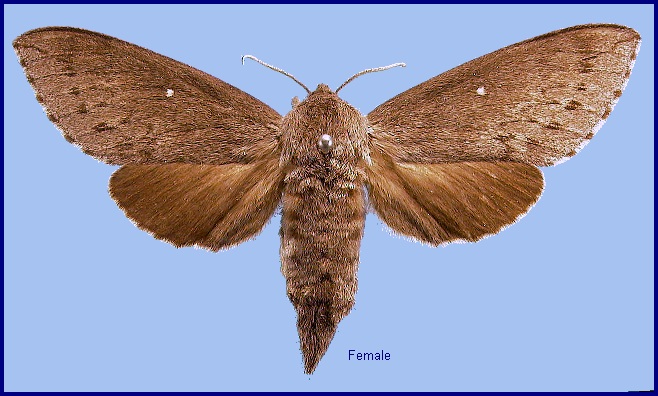
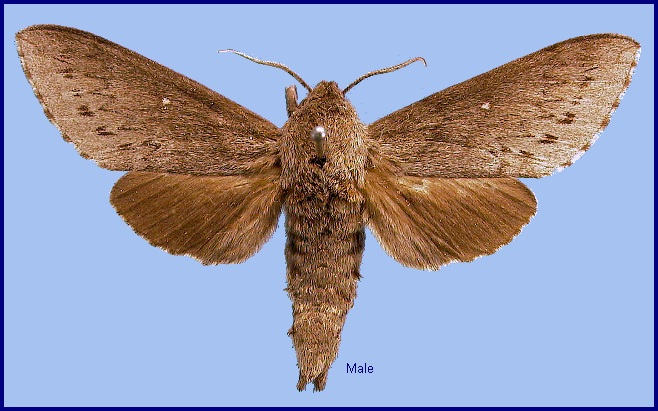
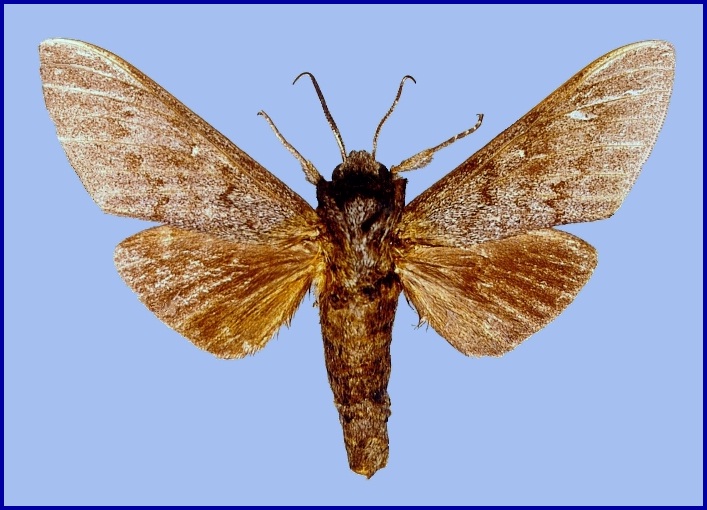
Sphingulus mus Staudinger, 1887, in Romanoff (ed.), Mém. Lépid. 3: 156. Type locality: [Russia, Primorskiy Krai,] Suifun [Suifen river].
Synonym. Sphingulus mus taishanis Mell, 1937, Dt. ent. Z., Berl. 1937: 8. Type locality: China, Shantung [Shandong], Taishan [Tai Shan], 1550m.
Note. Sphingulus mus taishanis was synonymized with the nominotypical subspecies by Kitching & Cadiou (2000) Hawkmoths of the World: 67. However, it was implicitly reinstated as a subspecies of Sphingulus mus by Zolotuhin & Yevdoshenko (2019) Hawkmoths of Russia and adjacent territories: 141, 439. Zolotuhin & Yevdoshenko (2019: 439) (STI 22079) claimed that the 'Chinese populations [of Sphingulus mus] have never been separated from the nominate subspecies, despite Mell (1937) (STI 19180) having described the (admittedly only then known) Chinese population from Tai Shan in Shandong as Sphingulus mus taishanis. Zolotuhin & Yevdoshenko (2019) claimed that the two populations, as evidenced by DNA barcode data from China (Fujian, Hubei, Hunan, Shaanxi and Zhejiang) and Russia (Primorsky Krai), 'display a 1.8% difference in the COI that is evidence of their independence, at least on a subspecific level'. They also noted that the Chinese populations were smaller, with slenderer wings and chequered cilia. Although Zolotuhin & Yevdoshenko (2019) considered that 'generally, it [the cilia chequering? the DNA barcode divergence?] is a character of a level of a species', they raised 'the populations of Japan [sic China -- Sphingulus mus does not occur in Japan] to the rank of a separate subspecies with the name of taishanis Mell, 1937 until we have additional data'. Of the three morphological characters listed, the last does not hold, as specimens from the Russian Far East (see http://sphingidae.myspecies.info/taxonomy/term/2580/media) also have conspicuously chequered cilia. Although the first two characters are of only minor significance, they are consistent in the individuals studied, and so, in combination with the DNA barcode divergence, the subspecific status of Sphingulus mus taishanis may indeed be valid. However, DNA barcode data is required from specimens between Beijing and the Russian Far East, as well as Korea, to confirm this.
Wingspan: 57--60mm. Forewing upperside with only the two most distal lines indicated, the post-discal line by double dots at the veins. Body very uniform in colour.
In the male genitalia, uncus about three times as long as basally broad, narrowed towards apex, which is truncate-sinuate with projecting angles; covered dorsally with long hair-scales. Gnathos with a rounded mesial lobe that is about as long as broad; the sides slightly incurved. Valve with inner surface covered with long, weak hair-scales. Harpe reaching beyond apex of valve, the ventro-distal process gradually narrowed, somewhat curved inward distally, not sharply pointed; a dorsal process present near the base is also obtuse. Phallus with a patch of spines internally, visible externally as brown dots; hook pointed. In the female genitalia, ostial plate strongly sclerotised; the lobe anterior to the ostial cavity sinuate.
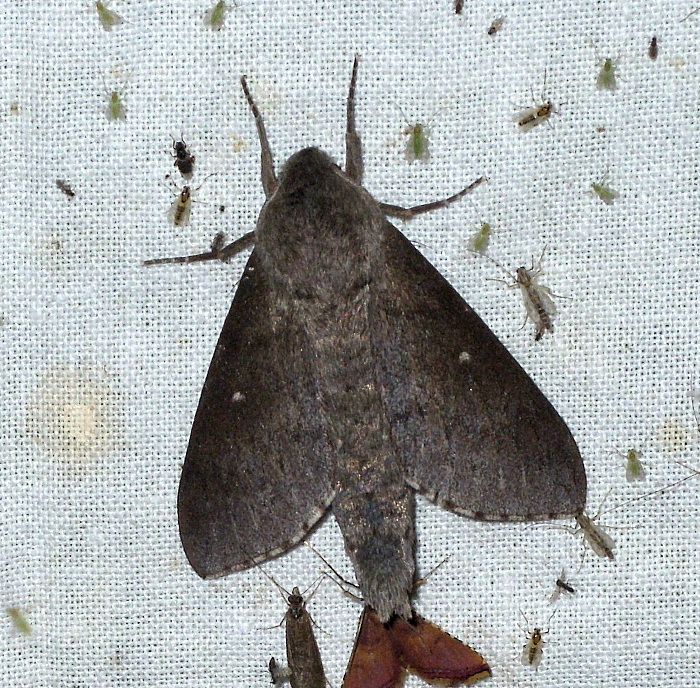
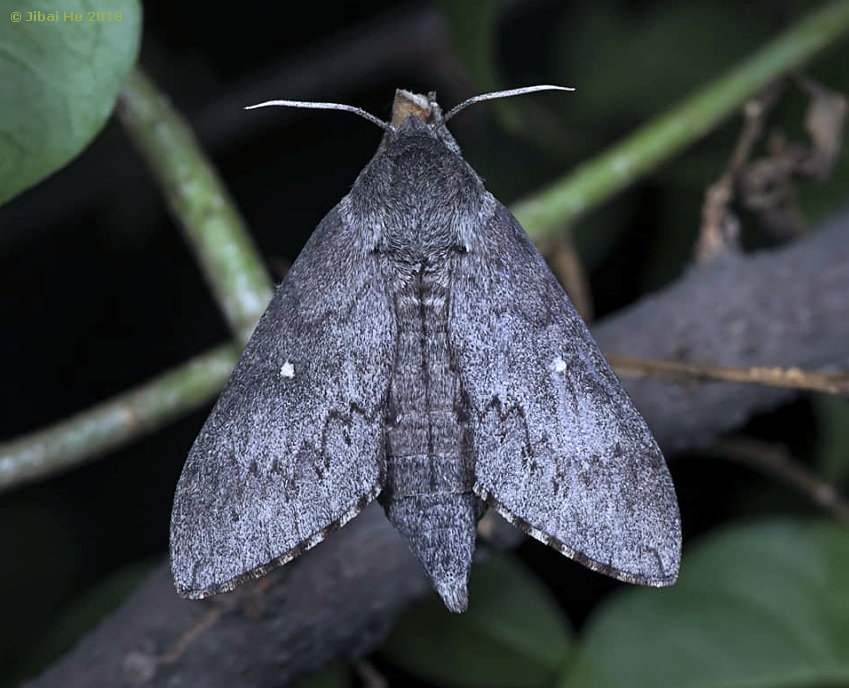
In the Russian Far East, a lowland species of deciduous woodland dominated by Quercus mongolica (Izerskiy, 1999b).
China: v (Shanxi); 9-13.v (Beijing); 30.v (Liaoning); 8-30.vi (Nei Mongol; Beijing); vii (Beijing; Heilongjiang; Shaanxi); 28.vi-11.vii (Hubei); 4.viii (Shandong; Beijing). Russia: vi (Khabarovsk); vi (Primorskiy Krai); 19.vi-viii (Primorskiy Krai); 16.vii (Primorskiy Krai); 17.vii (Amurskaya).
In northern China, Yang (1978) states that Sphingulus mus has only one generation per year during May and June; however, captures from northeastern China and the Russian Far East indicate a partial second brood during July and August in some years.
Park et al. (1999) give June-July as the flight period in Korea.
OVUM: Unknown.
LARVA
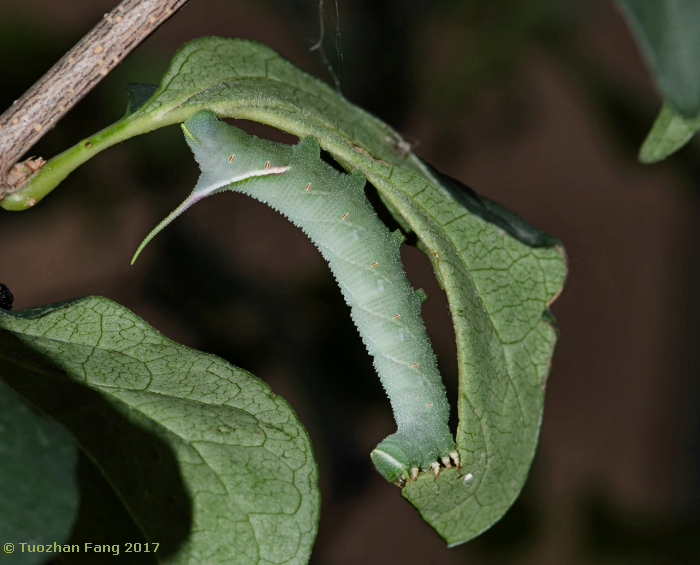
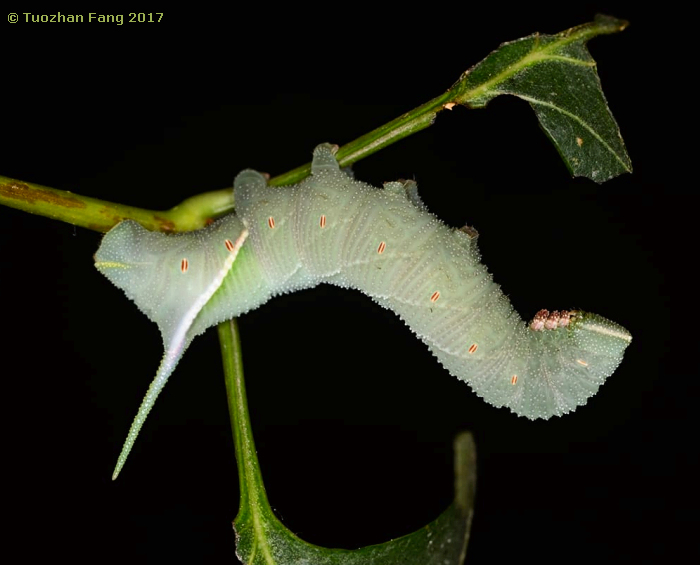
PUPA
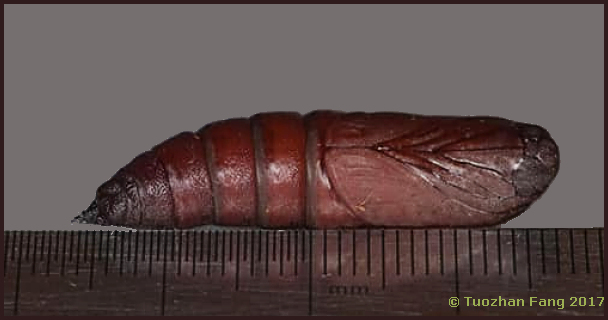
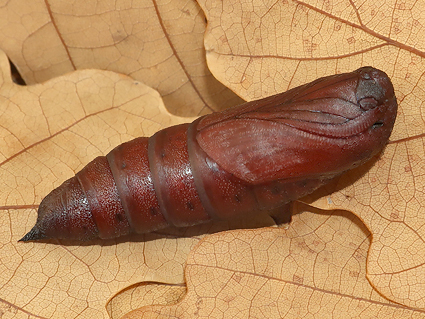
Larval hostplants. In Amurskaya, Russia, recorded from Syringa reticulata subsp. amurensis (Streltzov, Osipov & Malikova, 2003). Reared on Fraxinus in captivity (Izerskiy, 1999b). Recorded from Syringa oblata around Beijing, China (Tuozhan Fang, pers. comm. 2018). In fact, species of Syringa appear to be the only host in the Haidian District of Beijing (Vyacheslav Ivonin & Yanina Ivonina, pers. comm. 2022).
Unknown.
China: Nei Mongol (Zalantun/Butha Qi; Hulunbuir Region, Sanhaodian); Heilongjiang (Harbin; Lalin); Liaoning (Changhai, Dachangshan Island; Chaoyang); Beijing (Fangshan; Baihua Shan; Badaling National Forest Park; Puwa, 1100m; Haidian; Linglong Courtyard; Luoba Dibe ijian); Shandong (Tai Shan, 1550m); Shanxi (Taiyue Shan); Shaanxi (Tongchuan; Yintai District); Henan; Zhejiang; Hubei (Shennongjia; Zigui, 300m); Hunan.
Known already from northeastern China, the records from the Taiyue Shan, Shanxi and Hubei (AAUH, SIES, IZAS) represent a considerable southwestward extension of the known range of Sphingulus mus.
North Korea: North Hamgyong Province (Charyung; Gyungsung).
South Korea: Kyonggi Province (Gwangleung); Kangwon Province (Gwangduk-san; Seolak-san; Woljeong Temple; Jeombong-san; Jang-san); South Kyongsang Province (Hamyang).
Russia: Amurskaya (Kundur); Yevreyskaya (Obluch'e; Bastak); Khabarovskiy Krai (Khabarovsk); Primorskiy Krai (Kaymanovka; Primorskiy; Barabash; Khasan; Jankowski Peninsula; Suifen River; Vladivostok; Ussuriysk; Gribnoye; Novovladimirovka; Anuchino; Primor'e; near Kalinovka; near Lazarevka; near Zanadvorovka; Anisimovka).
Southeastern Russian Far East and the Korean Peninsula south into eastern China.
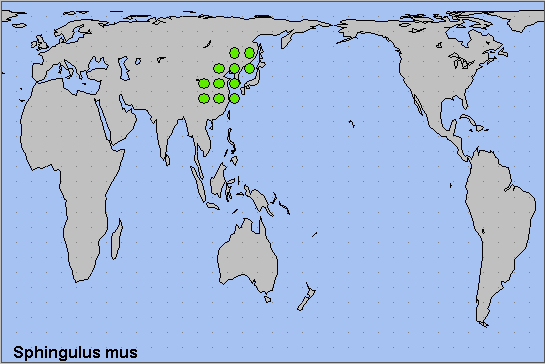
Holarctic; eastern Palaearctic region. Pleistocene refuge: Monocentric -- Manchurian refuge.
 Return to Sphingidae of the Eastern Palaearctic species list
Return to Sphingidae of the Eastern Palaearctic species list